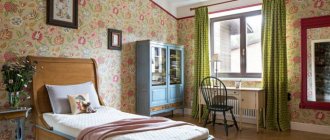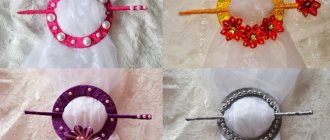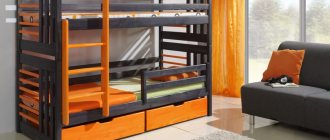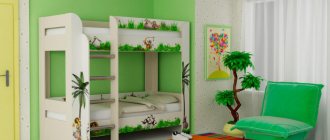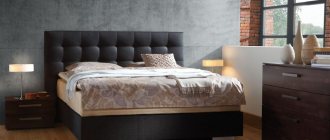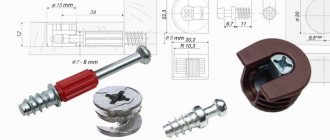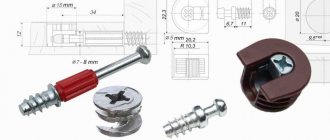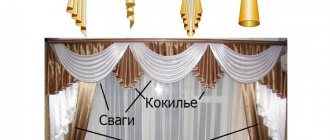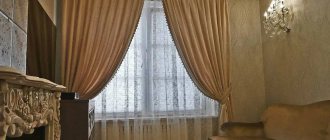One famous children's song contains the following words: “What progress has come…”. In our high-tech world, progress in any industry is at a very high level. Furniture manufacturing is not considered to be lagging behind. Therefore, when you often go to furniture stores, it is difficult to distinguish products made from natural materials from similar ones made from artificial ones. One type of such material is rattan.
What is the essence of the problem of choosing rattan furniture?
Rattan furniture has been popular among consumers for decades. But until recently, only the aristocratic strata of social society enjoyed such elegant pieces of furniture.
The reason for this was the high cost. Thanks to the development of technology and the expansion of trade relations between countries around the world, the availability of rattan furniture has changed for the better. In addition, the appearance of polyrattan products on the market has expanded the number of potential buyers. But this gave rise to two dilemmas: which rattan is better and whether it is worth paying a high price for the original if you can buy a budget analogue. In this publication we will try to talk in detail about all the pros and cons of natural and artificial rattan. Perhaps this will help consumers make the choice they need.
How to properly care for wicker furniture
Comments: Comments on the post How to properly care for wicker furniture are disabled
For many years, products woven from wicker have enjoyed deserved popularity not only among owners of country cottages who adore garden wicker furniture, but also among city residents of apartment buildings. The owners of open-air restaurants, bath complexes and ethnic cafes also like to decorate their establishments with them. These products are beautiful, environmentally friendly and charged with a special energy that distinguishes all handmade items.
Synthetic rattan
If you do not have special knowledge, it is quite difficult to distinguish at first glance from what material – natural or artificial – the product is made. However, these are two completely different materials, although visually their differences are almost invisible. And they are radically different in their characteristics. A mixture of polymers and rubber are synthetic materials used to make artificial rattan. It is created by extrusion - pressing a thick paste or viscous melt through forming holes of the required size. After which the material takes the form of a cord or tape with the configuration of a rod, crescent, or strip. The texture most often imitates tree bark. An interesting fact is that, like natural rattan, artificial rattan was “born” in Southeast Asia.
The material, invented at one time for completely different purposes, was experimentally endowed with the qualities necessary for consumer needs. This made it possible to successfully use it in the production of furniture products.
Comparing the characteristics of both materials, it can be noted that they are mostly identical.
Artificial rattan:
- environmentally friendly, since manufacturers practically do not use impurities harmful to human health;
- durable, does not stretch, has a large margin of resistance to loads;
- light in weight, the structure is weighed down only by the metal frame, which is used for stability and allows you not to be afraid of natural negative phenomena;
- durable, unlike the natural source, its service life and preservation of visual appeal is more than 30 years;
- unpretentious and does not require special care.
Elements of wickerwork
Wicker products consist of several elements, each of which, if necessary, can be replaced or restored. The design of such furniture includes the following parts:
- The upper rim with stands attached to it.
- The bend, which is the curved part of the weave.
- The body (frame) of the product is made without the use of wicker elements.
- Additional triangle-shaped fastening that enhances the rigidity of corner joints.
Differences between artificial rattan and natural rattan
Rattan made from artificial material is hypoallergenic. People suffering from this disease can safely purchase such garden furniture for their use.
- There is no place for mold or mildew on the surface of this furniture.
- There is no need to put away faux rattan furniture during the winter or during inclement weather. It is characterized by high resistance to moisture and temperature changes.
- Rattan wicker furniture is not afraid of chemical and mechanical influence.
- Wide range of colors and textures. This is a complete imitation of natural rattan, combined with materials such as glass, stone, steel. Any design indoors or on an open veranda can be supported with sets of mobile and stationary furniture.
- Competitive cost of products. Analogs made from natural rattan are several times higher. This is influenced not only by the quality of the material, but also by the fact that it can only be manufactured in a few regions of the world. The cost of raw materials is added to the cost of delivery, and the result is a rather large figure in rubles. And synthetic wicker furniture is produced everywhere.
It is impossible not to talk about the disadvantages of artificial rattan. They may be few, but some of them are quite significant. In the first place is a specific smell. This is the main drawback. Although it disappears after half a month, it can appear in direct sunlight. But this can be avoided if you purchase products from trusted manufacturers.
It’s not difficult to find out the names of companies; just read reviews from consumers on furniture websites on the Internet. It happens that under the influence of the same hot sunlight, some stretching of the artificial rattan ribbons on the products is observed. To return the furniture to its original appearance, it is enough to tighten it occasionally.
Replacing rods
Before starting work, you need to inspect the product from all sides and identify areas of damage. One of the most vulnerable areas of wicker furniture are the rods. If they break, the broken elements must first be pulled out of the weaving. At the next stage, we measure the remaining parts, which will allow you to choose the right size. In order to create a certain reserve, it is necessary to add 8-10 cm to the resulting length.
You can buy rattan sticks at a regular hardware store, but you will have to source the willow rods yourself. The most suitable material for weaving is shrubby willow stems, which are 5-10 mm thick. You must first remove the bark from them, then soak them in water for 2-3 hours.
To soften the base of wicker furniture, place a wet towel on the damaged area, which will make it more elastic and greatly facilitate the repair process. Soaked rods must be inserted one by one in place of the old parts.
Insert one end of the rod through the frame of the structure and begin to weave in accordance with the pattern. During the work, you can use tweezers, and so that individual elements do not become brittle and do not stand out from the overall row, it is recommended to glue them along the entire length.
After the restoration is completed, the product is allowed to dry. This is required for the glue to dry and narrow the holes. To make the weaving as reliable and durable as possible, the twigs can be secured with shoe nails.
If the old rods are cracked and have lost their original appearance, it is recommended to thoroughly lubricate them with linseed oil. It takes a certain time for the liquid to be absorbed, after which another layer is applied to the surface. Particularly large cracks can be repaired using putty.
Required Tools
At the initial stage of work, when a simple product is selected for manufacturing, a minimum of equipment will be required for weaving. To get started, you will need:
- stapler - for attaching rattan to the base if a wooden base is used;
- small pliers;
- small hammer;
- a convenient sharp knife or cutter;
- soldering iron for soldering connecting elements of the material or glue.
It is convenient to work with artificial rattan, as it is flexible and comes in the form of long threads.
In order for the manufacturing process to proceed without unexpected interruptions, it is necessary to take into account the recommendations of experienced craftsmen.
Cleaning products
All cleaning products are divided into three large groups:
Gentle ones are made independently, at home. The material for them is either natural ingredients or cosmetic hygiene products. The most famous option is lemon water. To make such a cleaning mixture you will need a liter jar of water and half a lemon. Cooking method:
- boil water
- let it cool for five minutes,
- lightly press the lemon and place it in a container of water,
- after half an hour, pour into a glass or enamel container,
- let it brew for at least 6 hours.
Advice: it is best to prepare it before bed, then the infusion will be ready in the morning.
Simply squeezing lemon into water is not enough, since the most useful microelements are contained in the bark and are released only naturally.
This mixture is used to treat all types of wicker furniture, except for synthetic and soft elements.
Another mixture is prepared from liquid hand soap or shampoo (it is better to use shampoo). For one liter you will need a tablespoon of soap.
Restorative agents include polishes. They are:
Aerosol polishes are not always cheaper, but they are significantly inferior in quality to cream polishes.
The properties of polishes follow directly from the name. They polish furniture and fill microcracks, creating an even protective coating. The most important part of a quality polish is the base. The basics are divided into:
It is preferable to choose wax-based polishes, as they create a better quality coating. In addition, an important element of any polish is antistatic. These components repel dust and small particles of dirt. As a result, the surface remains clean longer.
The most famous companies producing polishes:
- Pronto (the most famous manufacturer with the widest range of products and affordable prices, country of origin: Holland),
- Rustin's (the Danes are only slightly inferior to their neighbors, the main focus is on creamy oil polishes),
- Mebelux (Russian manufacturer, products are represented mainly by aerosol polishes, inferior in quality to competitors),
- Emsal (German product, characterized by standard quality and a fairly high price).
Polishes are used after initial cleaning with detergents.
Chemical cleaners destroy the texture of wood and wicker, so they are only suitable for washing synthetic surfaces. There is no fundamental difference in the choice; it is desirable that the drug contains alcohol and antistatic agents. Alcohol dissolves fat and the surface begins to shine. Any glass cleaner is suitable.
In addition to this, there are several other building materials that are used to refurbish wicker furniture. We are talking about hydrovarnishes. They are practically odorless and dry quickly. Their use is only advisable if the surface is severely damaged.
An important point and the means by which care is carried out. For this work, you will need a flannelette or pure cotton cloth; a regular sponge will also work. Any other options will scratch the surface.
What will be required for implementation?
To open a small workshop for the production of polyrattan, you will need a room of 30-50 square meters. You can rent it inexpensively on the outskirts of the city, or use a garage or other utility room. It should accommodate an extruder line, a warehouse for storing raw materials and finished products.
The main thing that is required is an extruder line for the production of polymer filament.
An extruder is a unit that continuously processes plastic raw materials to a homogeneous composition, and then, using a sizing device and a nozzle, shapes the plastic into a rod or braid.
The hardware complex also includes a hopper for mixing raw materials, a device for crushing them, a cooling compartment, and a wheelbarrow for transporting goods. When purchased, the kit usually includes several profiles to create special textures, replaceable nozzles for different rod diameters, and a set of additives and paints.
A mini workshop for the production of rattan does not imply huge costs. You will have to allocate funds monthly:
- for renting premises;
- for utility expenses;
- for consumables;
- for salaries of extruder operators.
A large-scale advertising campaign is not required: there is a clear target audience, which should be called before opening a business and establishing preliminary supply channels. You need to spend money on business cards and creating a one-page website. Costs are reduced through the use of recyclable materials, crushed using a crusher.
Production will not require special permits, since it does not harm the environment or human health.
The company will need to be officially registered with the tax authorities. Please note that in the regions they offer tax breaks and subsidies to businessmen who decide to engage in production.
Rules for caring for wicker furniture
Most people associate wicker furniture primarily with country life: a calm, measured rhythm, outdoor gatherings with a cup of tea in a comfortable openwork chair made of rattan or willow. Or a rocking chair appears near the fireplace, and you are wrapped in a soft blanket with your favorite book in your hands.
Such pleasant pictures are drawn by the imagination at the mention of wicker furniture. Although in modern design such furniture is used both in city apartments and in the design of cafes and restaurants (especially summer areas). Lightweight, environmentally friendly, beautiful material brings a certain character to the interior, adds warmth and comfort.
Wicker furniture is made from various fibers of plant origin. The most popular materials for weaving are rattan, willow twigs, reeds, reeds, and bamboo. Synthetic materials are also used.
Step-by-step instructions for starting a production workshop
Opening a production facility is not difficult. It will take about a month and several steps:
- Create a clear business plan with forecasts and revenues.
- Establish preliminary supply channels.
- Look for a suitable premises and sign a lease agreement.
- Purchase an extruder line.
- Register an individual entrepreneur. The appropriate tax regime is the simplified tax system “Income”.
- Hire one or two extruder operators.
- Purchase raw materials for production.
- Conclude agreements with those to whom you will supply finished products.
After this you can start working. According to those who have already tried out the business idea, production quickly begins to make a profit.
Life service, company
Dismantling, installation, replacement, mixer, bathtub piping, toilet, bidet, bathtub, shower cabin, jacuzzi, sink, siphon, rod, filter, bracket, drain mechanism, setting, clearing blockages, corrugation, disassembly, assembly, gating, socket, chandelier, switch, light bulb, socket, transformer, sconce, lamp, bell, fan, electric unit. points, email point, cleaning, water meter, making holes, bell button, machine, drilling holes, ouzo, screen, tray, washing machine, dishwasher, refrigerator, connection, hood, dryer, electric stove, hob, oven, air conditioner, diagnostics , LCD TVs, waste shredder, recirculation pump, electronic module, sofa, corner sofa, armchair, armchair with armrests, kitchen corner, chair-bed, hatch lock, bearing, repair of household appliances, plumbing services, electrical installation, furniture repair
Moscow, 1st Bukhvostova street, 12/11k13
History of creation
Surprisingly, the age of wicker furniture is estimated at thousands of years. Our ancestors learned to process vines dozens of centuries ago. At first, such furniture could be seen exclusively in the homes of the poor. It was considered an inexpensive and very accessible option for interior design. Subsequently, the beauty of rattan was appreciated by representatives of the nobility. Craftsmen and entire factories appeared to produce products from wicker and rattan.
In Russia, wicker furniture became popular thanks to Prince Golitsyn. Regularly visiting abroad, the prince appreciated the magnificent appearance of products made from wicker. Returning home, Golitsyn created an entire workshop on his estate.
